Record beef output as sheep and lamb slows
Key points
- Beef production hit a quarterly record of 759,270 tonnes.
- National sheep slaughter fell to 2 million head, down 20% on the previous quarter.
- Lamb slaughter also eased sharply, falling 5.2 million head − the lowest quarter recorded since March 2022.
The Australian Bureau of Statistics (ABS) has released livestock slaughter and production data for the third quarter of the 2025 calendar year. Australia’s cattle industry continues to set new benchmarks, confirming record beef production for the September quarter.
Cattle
The Australian cattle sector continues to break records as Q3 ABS data is released. With positive conditions holding on across northern Australia, production has continued to climb – reaching records once again.
Cattle slaughter reached 2.48 million head, up 6% on the previous quarter and 10% year-on-year.
Queensland led the charge, recording one of the largest processing quarters ever, while NSW and Victoria also posted strong numbers.
Beef production hit a quarterly record of 759,270 tonnes, with NSW, Victoria and Queensland all setting new highs. Only Tasmania saw a slight decline.
Carcase weights remained steady at 307kg − slightly below last year’s average but consistent with seasonal trends. Female slaughter rates eased nationally to 53% (down from 54.5% in Q2) with reductions in NSW and Queensland, following record highs earlier in the year. WA was the only state to increase female slaughter.
Sheep
National sheep slaughter fell to 2 million head, down 20% on the previous quarter and 26% below Q3 2024. NSW recorded the largest drop, falling by 190,000 head to 740,000, followed by WA and SA. Victoria remained the largest turnoff state with 825,600 head but was down 5%.
Mutton production mirrored this trend, dropping 13% to 52,341 tonnes − the lowest since Q3 2022. Victoria was the only state to lift output, rising 5% to 19,816 tonnes. NSW, SA and WA all recorded double-digit declines.
Despite lower volumes, average sheep carcase weights rose to 26.1kg − the heaviest since late 2023. NSW averaged 28.2kg.
Lambs
Lamb slaughter eased sharply – falling 23% to 5.2 million head – the lowest since March 2022. Tasmania saw the steepest decline with 48%, followed by SA and WA.
Production dropped 25% to 126,171 tonnes, the lowest since December 2021. Victoria, the largest lamb-producing state, was down 22% to 66,922 tonnes.
Nationally, carcase weights remained stable at 24.3kg. Slight lifts in SA and Tasmania are likely due to increased grain feeding in those regions that suffered dry weather conditions.
Attribute content to Emily Tan, MLA Market Information Analyst.
Information is correct at time of publishing 20 November 2025.



